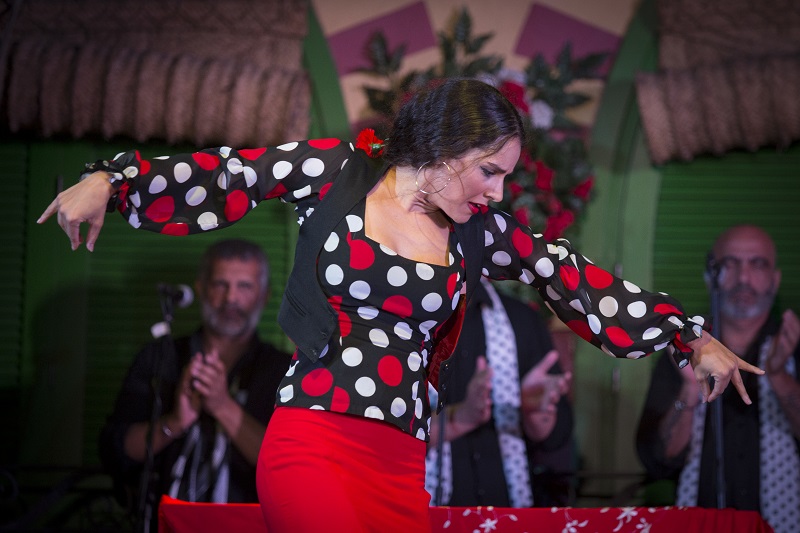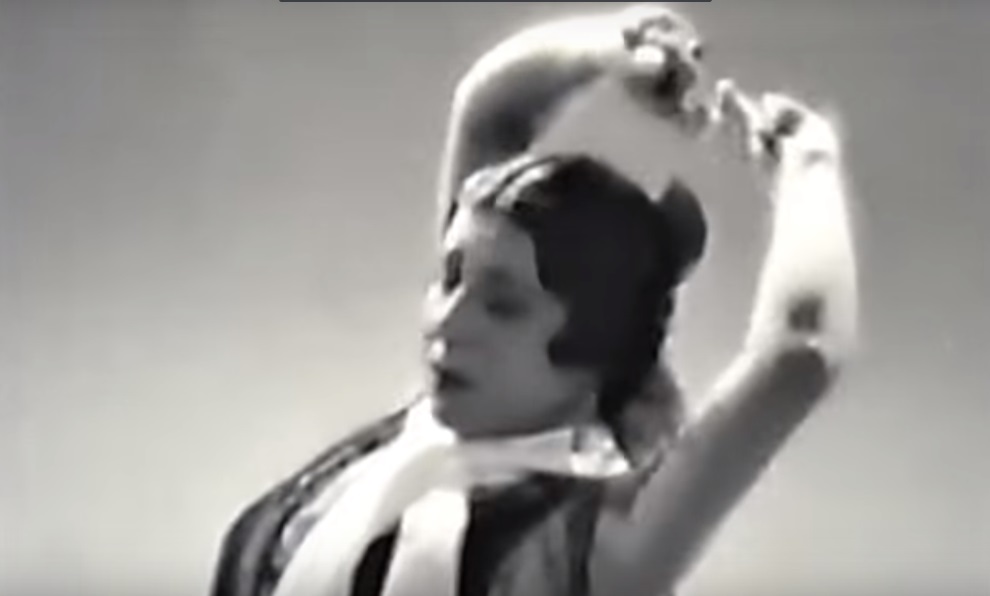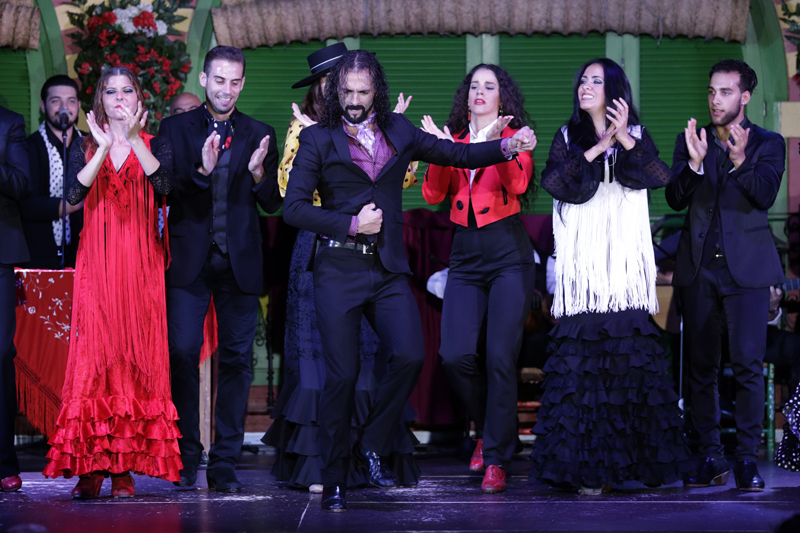
Flamenco dance, like singing, has integrated elements from different cultures. With the development of flamenco music the dance that appeared for the first time, recognizably, in the 18th century, emerged. Throughout its history, it has evolved to become consecrated as the artistic expression it is now.
Although at first the attention of flamenco was focused on the voice of the singer, little by little the dance was taking center stage in the performances. Since then, it has been developing until it has configured its own style within dance.
In its origin, flamenco dance took place in the taverns to later make the leap to the old singers cafes. It is, in these scenarios, where this artistic expression is acquiring greater identity. In part, thanks to the use of platforms that printed brilliance to the zapateado of the dancers for the sound, and also for the passion that these artists put into their performances. All this aroused public attention and little by little flamenco dancing began to steal prominence to cante.
At the beginning of the 20th century, the sigers cafes suffered a decline, but by then the flamenco dance was already consolidating in other stages thanks to its incorporation in choreographed shows and in multiple films and plays.
With the leap of flamenco dance to these new spaces, the first figures of the dance began to emerge: AAntonia Mercé ‘La Argentinita’, La Macarrona, Malena, Rosario la Mejorana, Concha la Carbonera, las hermanas Antúnez, las Coquineras, La Cuenca, Enriqueta la Macaca, Rita Ortega, Salú la Hija del Ciego, Miracielos, Mojigongo, Lamparilla, Antonio el de Bilbao or Estampío, among other many men a women dancers.
In the case of artists like ‘La Argentina’, his contribution to flamenco dancing was key, as he choreographed pieces by classical composers such as Isaac Albéniz, Enrique Granados and Manuel de Falla, as well as giving life to other popular-inspired shows such as ‘El Embrujo de Sevilla’, which made the interpretation of flamenco pieces more attractive to the public.

And similar to the trajectory of ‘La Argentinita’, it was that of the dancers like Laura de Santelmo and Pastora Imperio, who were joined by Carmen Amaya with a proposal that appealed to the most passionate flamenco. His performances in the most important stages of America were so successful, that Carmen Amaya was consecrated as one of the great figures of international flamenco dance.
But Amaya was not the first artist to take flamenco dancing beyond Spanish borders, since La Macarrona or La Argentinita had already performed flamenco pieces on stages in Berlin, Great Britain, Russia or France.
From the 50s, other artists were taking the witness of the first ones, continuing to leave a mark in the flamenco dance as Antonio Ruiz Soler, known as ‘Antonio El Bailarín’, who managed to become the history of flamenco as one of the best artists of this art.
Already in the seventies began to emerge artistic schools that trained dancers such as El Gato, Juan Pelao, Jose Greco, El Güito, Mario Maya or Antonio Gades, who gave a new impetus to flamenco dancing with works like ‘Carmen’, ‘El Love Sorcerer ‘or’ Blood Wedding ‘.
The artistic career of Gades marked another milestone in the history of flamenco dance, as he was the first director of the National Ballet of Spain, which was founded in 1978 with the aim of sealing a commitment to the conservation and evolution of Spanish dance and flamenco that still lingers.
At the same time, flamenco dancing was added to festivals, clubs and tablaos, spaces in which the most traditional styles of this art were claimed. It was the time of artists like Enrique el Cojo, Tía Juana la del Pipa, Farruco, Matilde Coral, Toni el Pelao, Manuel Soler, Manolo Marín, Manuela Vargas, La Chunga, Manolete or Merche Esmeralda, dancers who they have been and continue to be a reference in the world of flamenco.
From then until now, flamenco dance has continued to evolve, drinking from tradition, but also adding new elements and merging with other artistic genres. Names like Antonio Canales, Joaquin Cortés, Sara Baras, Eva Yerbabuena, Israel Galván or Eduardo Guerrero have written or are still writing the last pages of the history of flamenco dance.
In this brief journey through the memory of flamenco dancing, we are aware that we leave many names in the inkwell. His legacy has been transmitted from generation to generation, evolving and at the same time preserving the identity of an artistic expression that is a reference of Spanish culture.
A zapateado, an uprising, an auction, a flight of fliers, a break … continue to awaken emotions on stage because it is an artistic expression that, fortunately, is still very much alive, thanks to spaces such as the flamenco tablaos, which continue to host performances in direct.

This is the case of El Palacio Andaluz, which holds two performances every day, the first at 7:00 p.m. and the second at 9:30 p.m. A flamenco show, unique in Andalusia, which features a sensational staging of pure and traditional flamenco performed by dancers of recognized national and international prestige, such as Emilio Ramírez, ‘El Duende’, considered one of the best flamenco dancers in Spain.
If you visit Seville and want to enjoy the best flamenco dance, do not hesitate to book a ticket for our flamenco show.
© 2024 El Palacio Andaluz. All rights reserved.